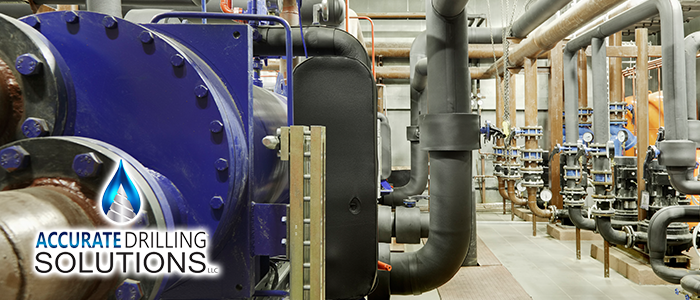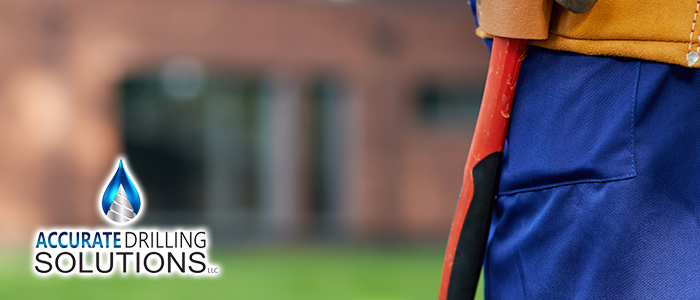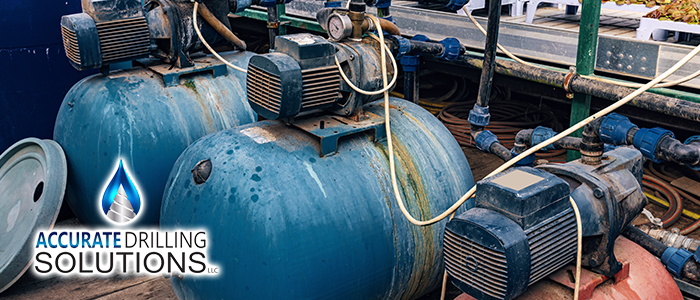
Largo Businesses: Maximizing Your Pump System Performance
For businesses operating in Largo and the bustling Clearwater area, water pump systems are often unsung heroes, critical for everything from basic sanitation and HVAC cooling towers to intricate manufacturing processes and irrigation. Ensuring these systems operate at peak efficiency is not just about preventing breakdowns; it’s about controlling operational costs, ensuring process reliability, and maximizing productivity. This guide focuses on strategies for Largo Businesses: Maximizing Your Pump System Performance, covering efficiency, maintenance, and troubleshooting for commercial applications.
The Importance of Peak Pump Performance
Why should Largo businesses prioritize pump system performance? Inefficient pump systems can lead to significant financial drains. Pumps are major energy consumers in many commercial facilities. An inefficient pump or one improperly matched to the application consumes excess electricity, directly increasing utility bills. Poor performance can also lead to inadequate water pressure or flow, disrupting production schedules, compromising product quality, or causing discomfort for employees and customers (e.g., poor HVAC performance). Furthermore, pumps operating outside their optimal range experience increased wear and tear on components like bearings, seals, and motors, leading to more frequent repairs and premature failure. Maximizing performance, therefore, translates to lower energy costs, improved operational consistency, reduced maintenance expenses, and extended equipment lifespan – all contributing positively to the bottom line.
Understanding your system’s baseline performance and identifying areas for improvement is the first step towards optimization. This applies whether you rely on a private well system or boost pressure from the Pinellas County municipal supply.
Understanding Your Commercial Pump System
Commercial pump systems in Largo and Clearwater can vary widely depending on the application. Common types include centrifugal pumps (including end-suction, split-case, and submersible types), booster pumps, and specialized pumps for specific industrial fluids. Key components typically include the pump itself, the electric motor driving it, control systems (starters, Variable Frequency Drives – VFDs), valves (check valves, isolation valves, control valves), pressure sensors, flow meters, and potentially pressure tanks or hydro-pneumatic systems.
Understanding the specific type of pump(s) your facility uses, their performance curves (which relate flow rate, head pressure, and efficiency), and how they integrate into your overall water distribution or process piping is crucial. Knowing the intended operating point (the specific flow and pressure the pump was designed to deliver efficiently) allows you to identify if the system is currently operating effectively. Accurate Drilling Solutions works with businesses to analyze their existing pump systems and identify opportunities for performance enhancement.
Energy Efficiency Strategies
Energy consumption is often the largest operating cost associated with pump systems. Implementing energy efficiency strategies offers significant potential for savings for Largo businesses.
One of the most effective strategies is ensuring the pump is correctly sized for the actual demand. Oversized pumps operate inefficiently and waste energy. A professional assessment can determine if your pump is appropriately matched to your current needs. Variable Frequency Drives (VFDs) are a key technology for energy savings, especially in systems with fluctuating demand. Instead of running the pump at full speed constantly, a VFD adjusts the motor speed to precisely match the required flow or pressure, drastically reducing energy use during periods of lower demand. Upgrading older, inefficient pumps and motors to newer models meeting modern efficiency standards (like NEMA Premium efficiency motors) can provide substantial energy savings. Optimizing the piping system by minimizing bends, friction losses, and ensuring proper pipe diameters reduces the workload on the pump, allowing it to operate more efficiently. Regularly checking for and repairing leaks in the piping network is also critical, as leaks represent wasted water and energy.
Proactive Maintenance for Optimal Performance
Regular, proactive maintenance is fundamental to Largo Businesses: Maximizing Your Pump System Performance. Neglecting maintenance leads inevitably to declining efficiency, increased failure risk, and higher long-term costs.
A structured preventative maintenance program should include several key elements. Regular lubrication of bearings (for applicable pump/motor types) according to manufacturer specifications prevents friction and wear. Checking and maintaining pump seals (packing or mechanical seals) prevents leaks, which can damage bearings and motors and waste water/product. Monitoring motor performance, including checking amperage draw, voltage balance, and insulation resistance, can identify potential electrical issues before they cause failure. Vibration analysis is a powerful diagnostic tool that can detect bearing defects, misalignment, imbalance, and other mechanical problems early. Checking pump/motor alignment is crucial, especially for baseplate-mounted pumps, as misalignment causes significant stress and premature failure of bearings, seals, and couplings. Inspecting and cleaning intake screens or filters prevents debris from entering the pump and causing damage or reduced flow.
Accurate Drilling Solutions offers comprehensive commercial pump maintenance agreements for businesses in Largo and Clearwater, providing scheduled inspections and service to keep systems running smoothly and efficiently.
Utilizing Controls and Monitoring
Modern control and monitoring systems offer powerful tools for optimizing pump performance and detecting issues proactively.
As mentioned, VFDs are not just energy savers; they provide soft starting (reducing electrical and mechanical stress), precise pressure/flow control, and built-in protection features. Properly configured pressure sensors and flow meters provide real-time data on system operation. Monitoring this data can reveal deviations from optimal performance, indicating potential problems like pump wear, blockages, or leaks. Advanced control systems can be programmed to operate pumps at their Best Efficiency Point (BEP) whenever possible, stage multiple pumps effectively in parallel systems, and provide alerts for abnormal conditions (e.g., low flow, high pressure, motor overload, dry running). Integrating pump system monitoring into a facility-wide Building Management System (BMS) or SCADA (Supervisory Control and Data Acquisition) system allows for centralized oversight and data logging for performance tracking and analysis. Resources like the Department of Energy’s Pump Systems page offer insights into pump efficiency.
Troubleshooting Common Performance Issues
Even well-maintained systems can experience performance degradation. Knowing how to identify potential causes helps in addressing them quickly.
Reduced Flow or Pressure: This common issue can stem from various causes: pump wear (impeller erosion), partially closed valves, clogged filters or intake screens, air entrainment in the system, leaks in the piping, incorrect pump speed (if using a VFD), or even changes in the system demand profile. Increased Noise or Vibration: Usually indicates mechanical problems such as worn bearings, cavitation (due to insufficient suction pressure), pump/motor misalignment, impeller imbalance, or debris lodged in the pump. Frequent Pump Cycling (if applicable): In systems with pressure tanks, this often points to a faulty pressure tank (waterlogged, incorrect pre-charge), leaks downstream, or a malfunctioning pressure switch or control logic. High Energy Consumption: Can be caused by operating away from the BEP, pump wear reducing efficiency, leaks, incorrect control settings, motor problems, or changes in fluid properties (viscosity, density). Pump Overheating: May result from inadequate cooling flow (especially for submersible motors), high ambient temperatures, operating against a closed valve (“deadheading”), internal friction due to wear, or electrical problems in the motor windings.
- Reduced Flow/Pressure: Check for clogs, leaks, pump wear, valve position.
- Increased Noise/Vibration: Investigate bearings, alignment, cavitation, debris.
- Frequent Cycling: Check pressure tank, leaks, control settings.
- High Energy Use: Assess operating point, leaks, pump/motor efficiency.
- Overheating: Verify cooling, check for deadheading, wear, electrical issues.
Prompt diagnosis by qualified technicians, like those at Accurate Drilling Solutions serving the Largo area, is essential to resolve these issues efficiently and prevent further damage.
Considering System Upgrades and Retrofits
For older or chronically inefficient systems, maximizing performance might require more than just maintenance; upgrades or retrofits may be necessary.
Replacing aging, inefficient pumps with new, correctly sized, high-efficiency models can yield rapid payback through energy savings and improved reliability. Retrofitting existing fixed-speed pumps with VFDs is often a cost-effective way to achieve significant energy savings and better process control, especially in variable-demand applications. Re-evaluating and potentially modifying the piping system configuration to reduce friction losses can improve overall system efficiency. Upgrading control systems to incorporate better monitoring, optimized control strategies (like BEP operation), and fault detection can enhance both performance and reliability. For facilities relying on well water, ensuring the well itself is capable of meeting the pump’s demand is crucial. Well rehabilitation or cleaning might be needed if the well’s performance has degraded over time. A professional system assessment can identify the most impactful and cost-effective upgrade opportunities for your specific facility in Largo or Clearwater. Information from groups like the Hydraulic Institute can provide standards and best practices for pump systems.
Conclusion: Investing in Pump System Health
For Largo businesses, water pump systems are vital assets. Maximizing Your Pump System Performance through efficiency measures, proactive maintenance, effective controls, and timely troubleshooting is a strategic investment. It leads to lower operating costs, enhanced reliability, reduced downtime, and ultimately, a stronger bottom line. Don’t let inefficient or poorly maintained pumps drain your resources.
Accurate Drilling Solutions provides expert commercial pump system services, including performance assessments, maintenance programs, repairs, and upgrades for businesses throughout Largo and Clearwater. Contact them to optimize your system by visiting https://accurate4.com today.
continue reading
Related Posts
Well Maintenance Tips for Bartow Property Owners For property owners
Dade City Commercial Water Solutions: A Complete Guide For businesses
North Port: Understanding Your Well System Options For homeowners and






